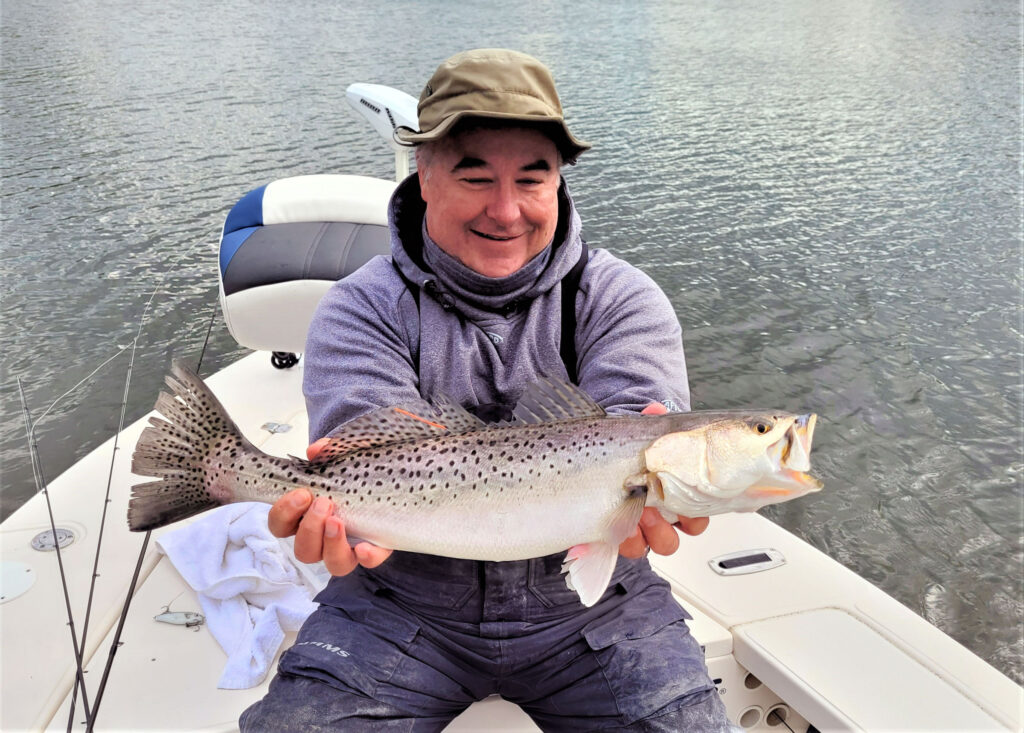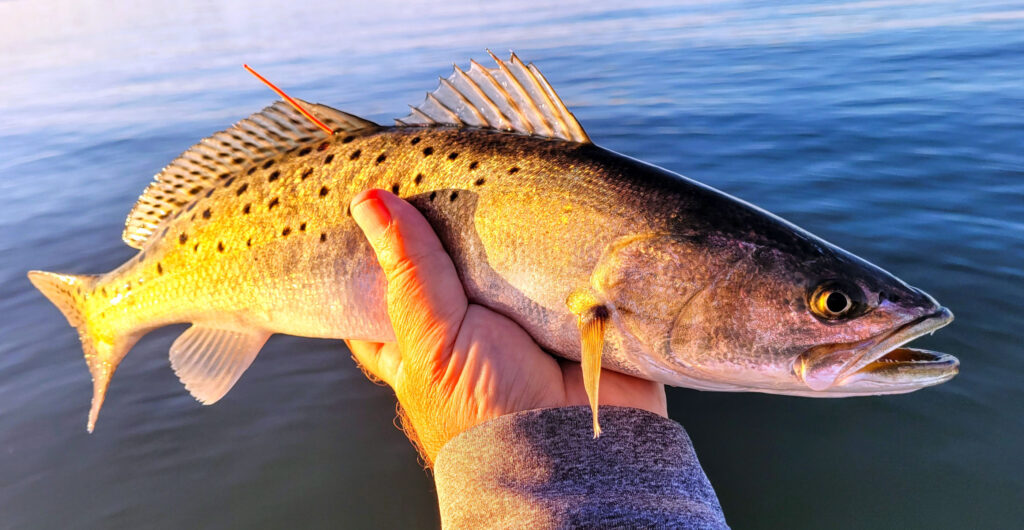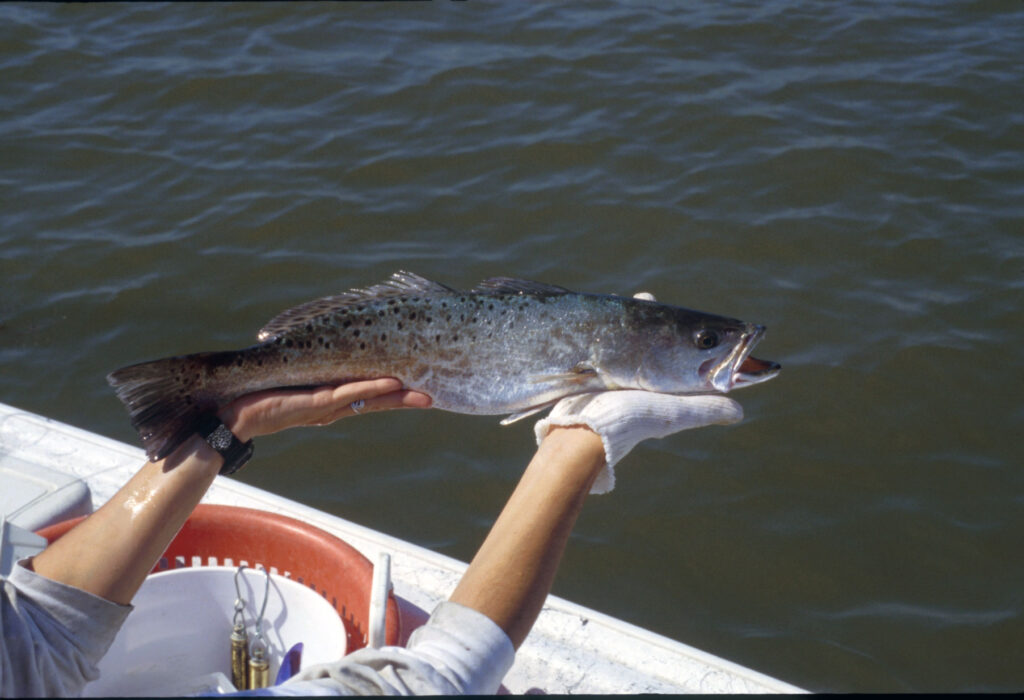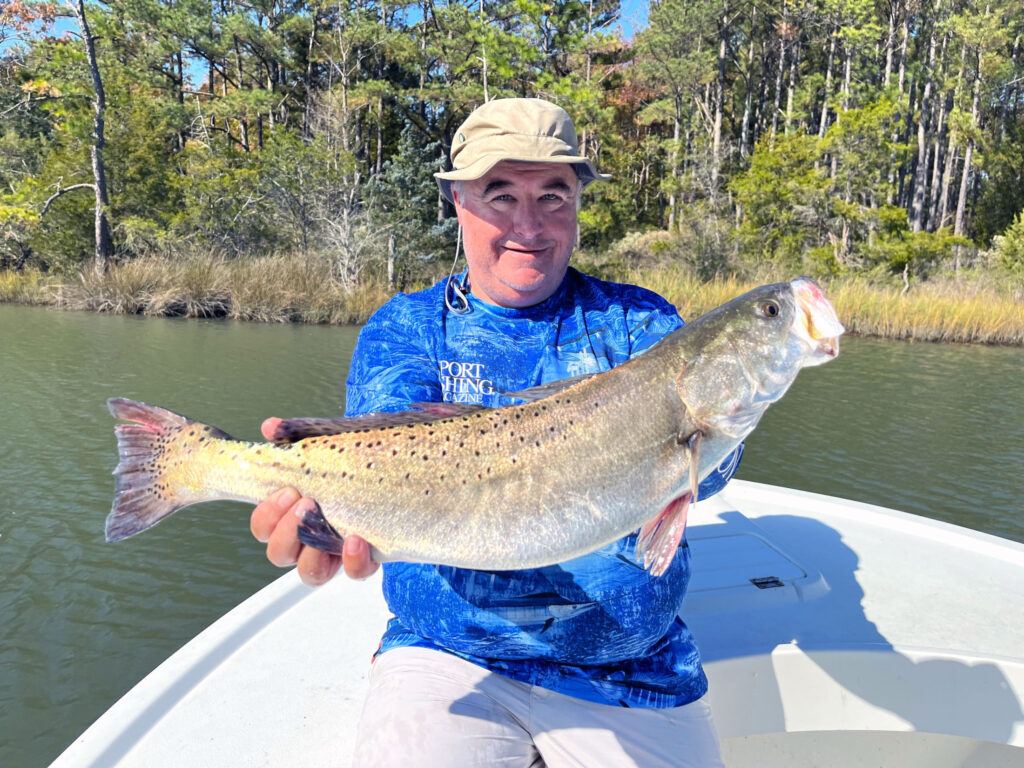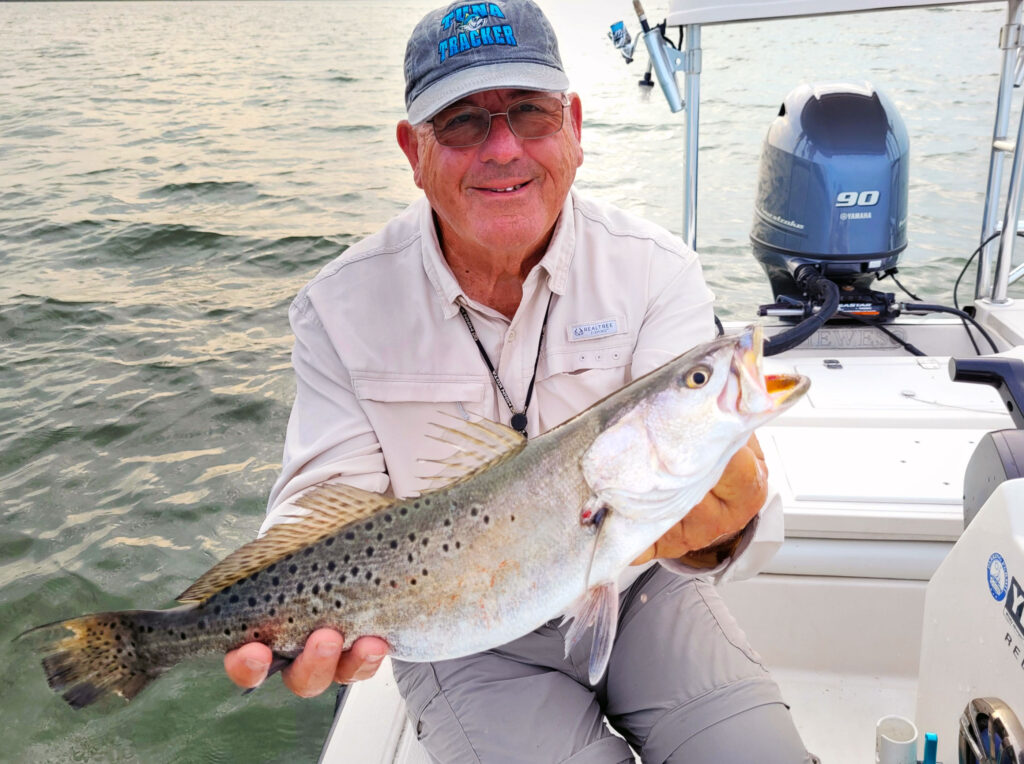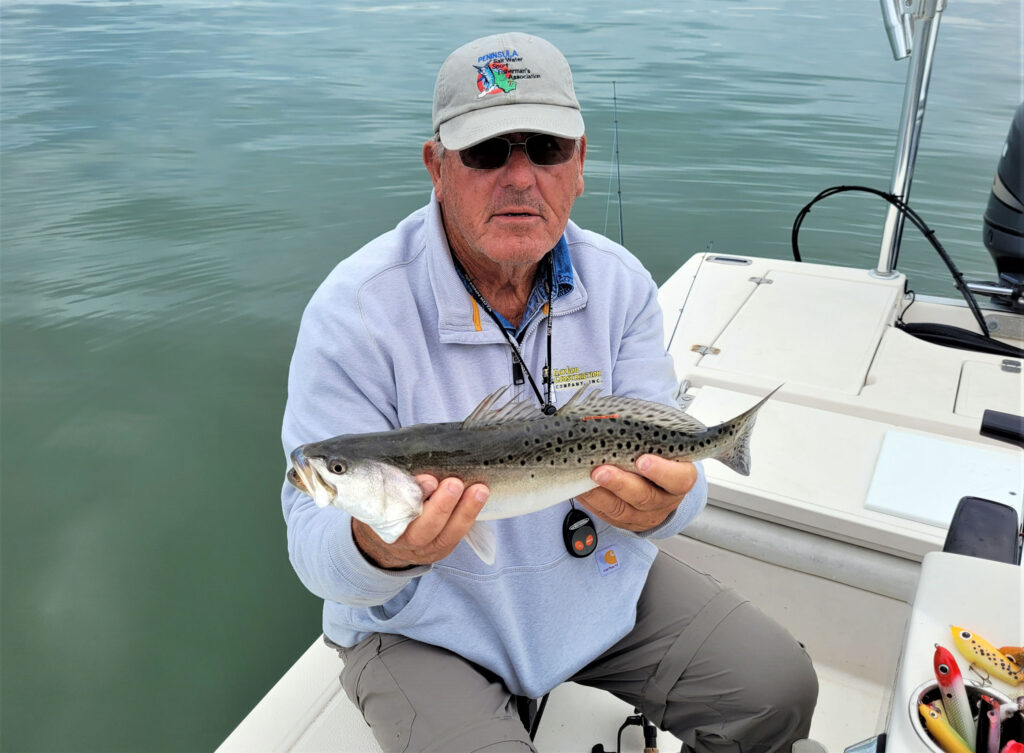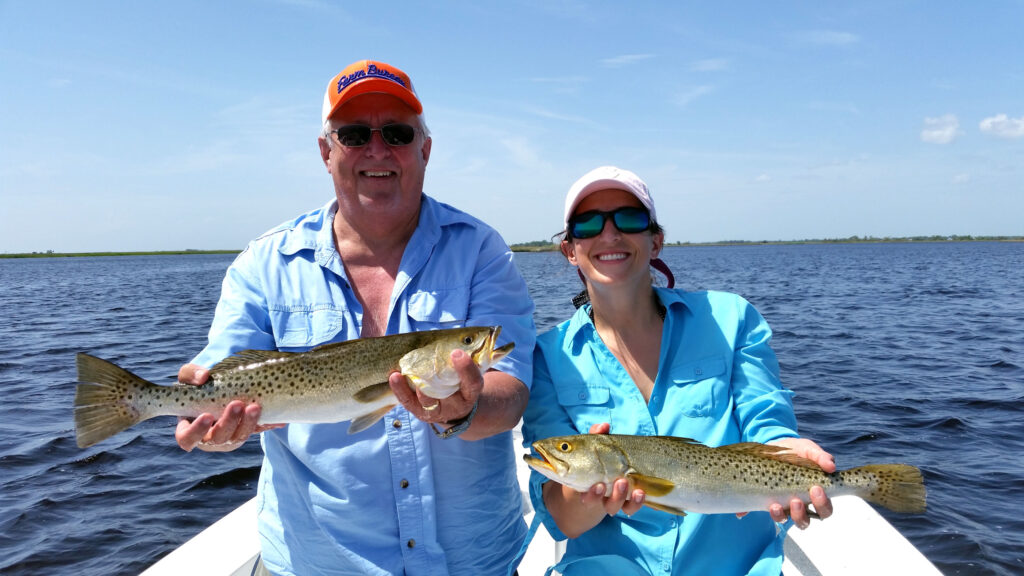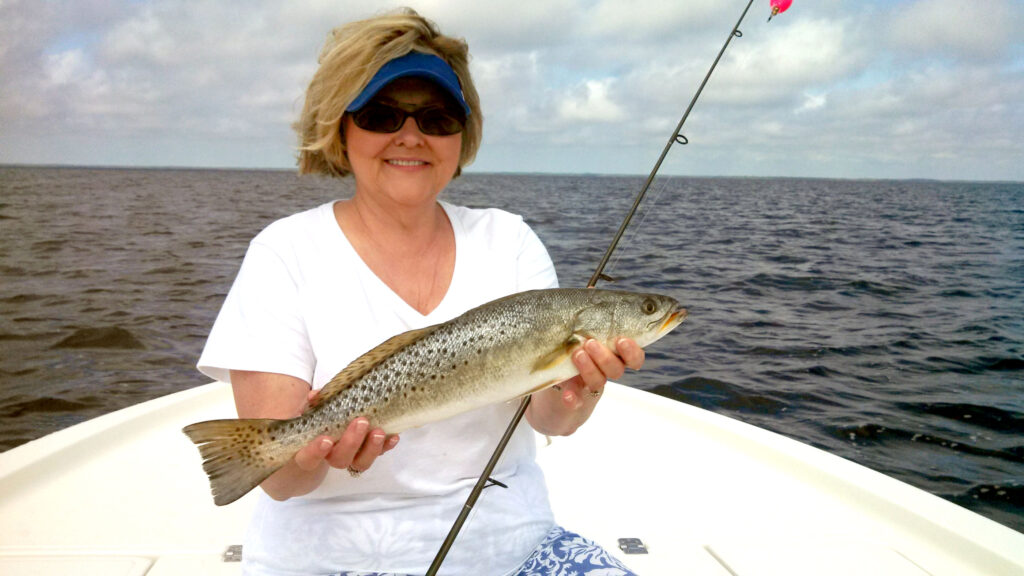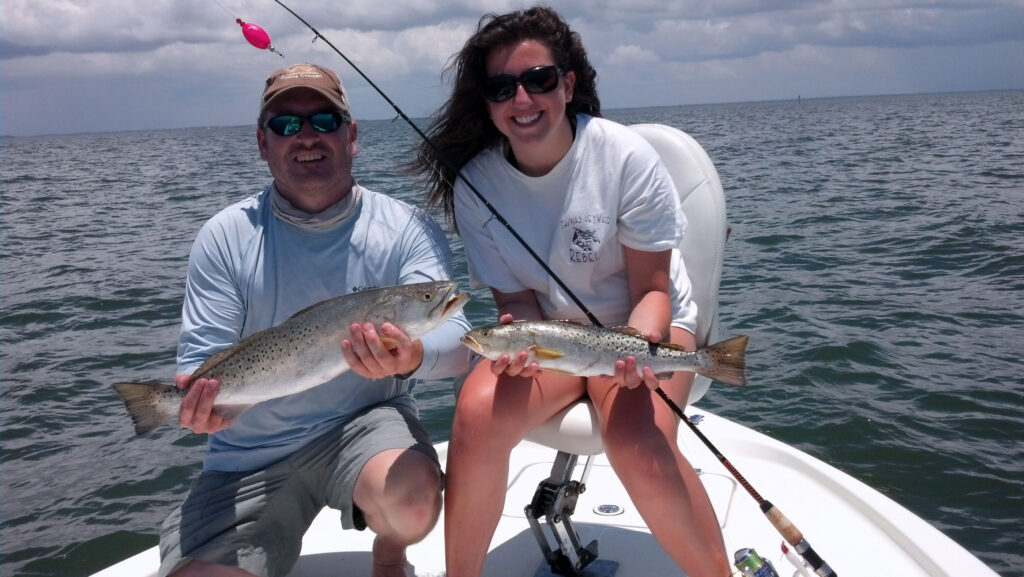Spotted Seatrout
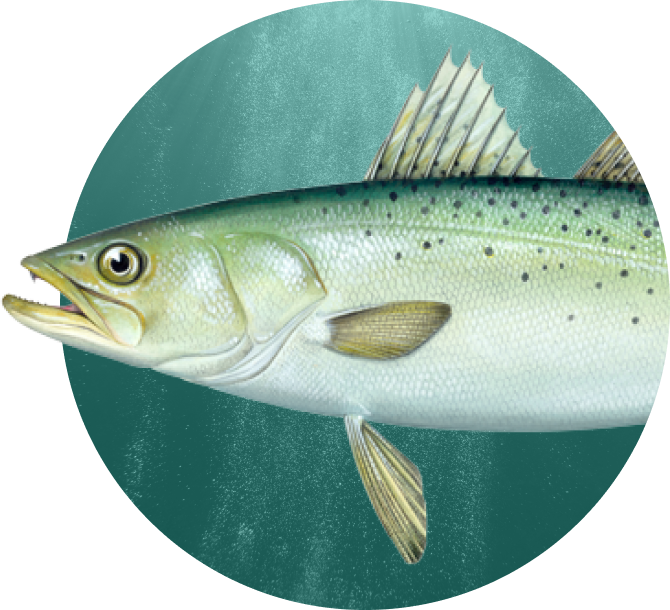
Latest News and Resources
-
Sciaenids Management Board Annual Meeting Presentations — October 2025
-
Sciaenids Plan Review Teams Meeting Agenda — November 2025
-
Sciaenids Management Board Annual Meeting Supplemental Materials — October 2025
-
Sciaenids Management Board Annual Meeting Materials — October 2025
-
2025 Annual Meeting Travel Authorization
-
2025 Annual Meeting Notice and Preliminary Agenda
-

Population Abundance
Unknown

Fishing Mortality
Unknown
Current Status
No range-wide assessment. Omnibus Amendment includes measures to protect spawning stock & established 12” minimum size limit.
Meeting Calendar
Next Meeting
No events found
Contacts
- Tracey Bauer, FMP Coordinator (TBauer@asmfc.org)
- Management Board, Doug Haymans, Chair
- South Atlantic Advisory Panel, Craig Freeman, Chair
Species Information
Spotted seatrout, commonly found from Cape Cod down to Florida, are a favorite among both commercial and recreational fishermen along the Atlantic coast. These vibrant fish thrive in estuaries and coastal waters, migrating seasonally to spawn and enjoy different habitats throughout the year. Known for their strong fight and delicious taste, spotted seatrout support a bustling recreational fishery, especially in North Carolina and Virginia. While commercial catches have declined over the years due to increased regulations, recreational fishing remains strong, with millions caught and many released to help sustain their populations. Managed with size limits and bag restrictions, efforts are focused on protecting their habitats and ensuring that spotted seatrout continue to thrive for future generations of anglers.
Management
In 2011, the South Atlantic Board approved the Omnibus Amendment for Spot, Spotted Seatrout, and Spanish Mackerel. The Amendment updates all three species plans with requirements of the Commission’s ISFMP Charter. Specific to spotted seatrout, the Amendment includes recommended measures to protect the spawning stock, as well as a required coastwide minimum size of 12″.
In March 2017, a report on Sciaenid Fish Habitat was released including information on habitat for several species, including spotted seatrout, during all stages of their lives, their associated Essential Fish Habitats and Habitat Areas of Particular Concern, threats and uncertainties to their habitats, and recommendations for habitat management and research. This report is meant to be a resource when amending FMPs in the future for these species.
Stock Status
Increased coastal development and the resulting loss of estuarine habitat, coupled with heavy fishing pressure, have affected spotted seatrout populations. The extent of anthropogenic effect is unclear as there is no coastwide stock assessment for the species and local assessments vary by state. Spotted seatrout are also susceptible to inshore calamities such as winter freezes, excessive fresh water, hurricanes, and red tide conditions. Fortunately, seatrout have two life history traits that helps maintain population size – maturing quickly and the ability to reproduce prolifically. Compared to other marine gamefish, spotted seatrout enjoy one of the longest spawning seasons.
A coastwide stock assessment of spotted seatrout has not been conducted given the largely non-migratory nature of the species and the lack of data on migration where it does occur. Instead, North Carolina, South Carolina, Georgia, and Florida have performed age-structured analyses on local stocks of spotted seatrout. Recent assessments are putting more emphasis on the inclusion of incidental bycatch data, release mortality, and the size and age structure of releases. Stock assessments provide estimates of spawning potential ratio (SPR), which is a measure of the effect of fishing pressure on the relative abundance of the mature female segment of the population. The Commission’s Spotted Seatrout FMP recommends a goal of 20 percent SPR; South Carolina and Georgia have adopted this goal, and North Carolina and Florida have established a 30 percent and 35 percent SPR goal, respectively.
Commercial & Recreational Fisheries
Commercial landings of spotted seatrout along the Atlantic coast historically came from Florida’s east coast and North Carolina, with Virginia, South Carolina, and Georgia accounting for a small portion of the total. From 1950 to 1976, commercial landings averaged 1.33 million pounds, but have declined since then due to increased regulation.
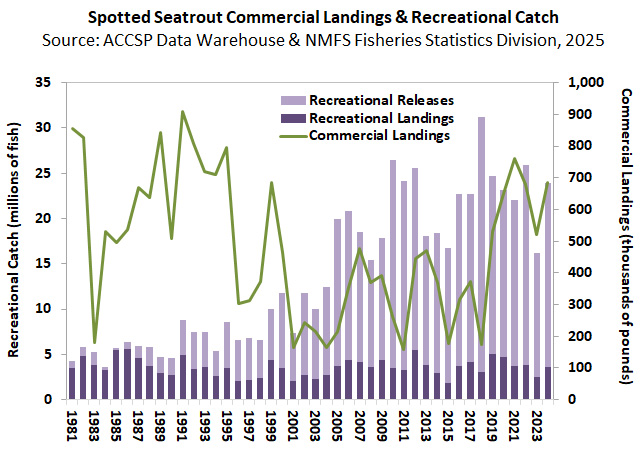
Significant changes to regulations include the 1987 designation of spotted seatrout as a gamefish in South Carolina, and the 1995 prohibition on the use of gillnets in Florida’s coastal waters. In the last 10 years, from 2015 to 2024, commercial landings averaged approximately 484,824 pounds. Variability in annual harvest is typical and seems to parallel the climatic conditions of the preceding winter and spring. In 2024, the commercial landings were estimated at 684,665 pounds, with the majority harvested in North Carolina (86%).
The spotted seatrout fishery is largely recreational. Recreational catch (harvest and releases) has markedly increased from 1981 (4.3 million fish) to 31.2 million fish in 2018. In 2024, recreational catch was 23.9 million fish. Recreational harvest has varied without trend throughout the time series, with 3.6 million fish (6.2 million pounds) harvested in 2024. Numbers and proportions of fish released alive have increased throughout the time series due to size and creel limits, as well as the encouragement of catch and release practices. In 2024, 85% of recreationally caught fish (20.2 million fish) were released.
Life History
On the Atlantic coast, spotted seatrout (Cynoscion nebulosus) occur from Cape Cod, Massachusetts to the Florida Keys, but are most abundant from the Chesapeake Bay southward. They are found primarily in estuaries, but may move into nearshore ocean waters during cold periods. In general, spotted seatrout appear to be non-migratory and spend their entire life within five to ten miles of their natal estuary, although fish from the Chesapeake Bay have been known to migrate seasonally (south in the fall, north in the spring) to North Carolina waters.
From April to September, sexually mature females spawn around estuary inlets. Depending on the size of the female, spotted seatrout produce anywhere from 10,000 to millions of oceanic eggs. The most important nursery grounds for the young are small tidal marsh creeks and shallow grass beds, while larger juveniles are widely distributed in estuarine areas and along coastal beaches. The fry gather in schools during their first summer and tend to travel together until they are four or five years old. They mature at the age of one year, when males are about 10 inches long and females about 11 inches. At any given age, females are larger than males, and they also attain a greater maximum age and size. They may live as long as 18 years, but individuals over five years of age are rare.
Adults frequent grass beds, live oyster beds, creek mouths, drop-offs, and structures such as jetties, stumps, pilings, and wrecks, where they feed primarily on shrimp and fish. They are most abundant in depths of less than ten feet and prefer temperatures between 60 and 80° F. Water temperatures below 45° F appear to cause large-scale mortalities. They tolerate a range of salinities, but adults appear to be most numerous in waters with salinities approaching that of seawater.
News & Resources
Explore recent news, management updates, and scientific reports to gain a deeper understanding of ongoing conservation efforts and sustainability strategies.
-
-
-
South Atlantic Advisory Panel Meeting Summary from October 2025
-
Consider Red Drum Addendum II: Modifications to Red Drum Management for Final Approval, Review Options, Public Comment Summary, and Advisory Panel Report (T. Bauer), Consider Final Approval of Addendum II; Consider Approval of Black Drum and Spotted Seatrout Fishery Management Plan Reviews and State Compliance for the 2024 Fishing Year (T. Bauer); Progress Update on…
-
-
-
The Sciaenids Management Board of the Atlantic States Marine Fisheries Commission convened in the Jefferson Ballroom of the Westin Crystal City Hotel, Arlington, Virginia, via hybrid meeting, in-person and webinar; Tuesday, August 5, 2025, and was called to order at 2:30 p.m. by Chair Doug Haymans.
-
The Sciaenids Management Board of the Atlantic States Marine Fisheries Commission convened in the Jefferson Ballroom of the Westin Crystal City Hotel, Arlington, Virginia, via hybrid meeting, in-person and webinar; Tuesday, May 6, 2025, and was called to order at 10:45 a.m. by Chair Doug Haymans.
-
The Atlantic States Marine Fisheries Commission’s Winter Meeting will be May 5 – 8, 2025 at The Westin Crystal City.
-
The Sciaenids Management Board of the Atlantic States Marine Fisheries Commission convened in the Jefferson Ballroom of the Westin Crystal City Hotel, Arlington, Virginia, via hybrid meeting, in-person and webinar; Tuesday, February 4, 2025, and was called to order at 1:30 p.m. by Chair Doug Haymans.
-
Prepared for the Commissioner Manual
-
Get Hooked on ASMFC News
Dive into the latest updates and catch all the important news by joining our newsletter mailing list. Stay in the loop with meeting agendas, fisheries management news, and more.
